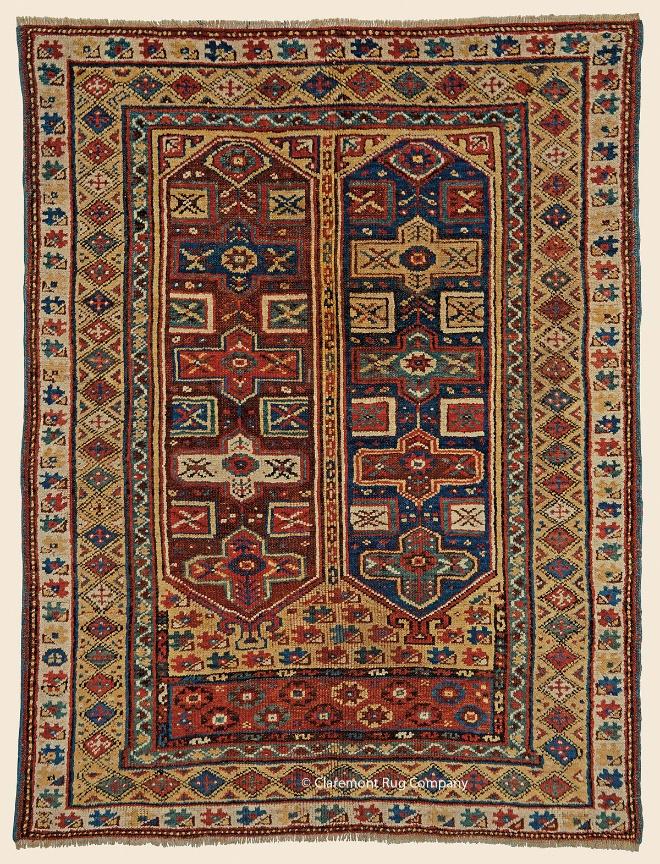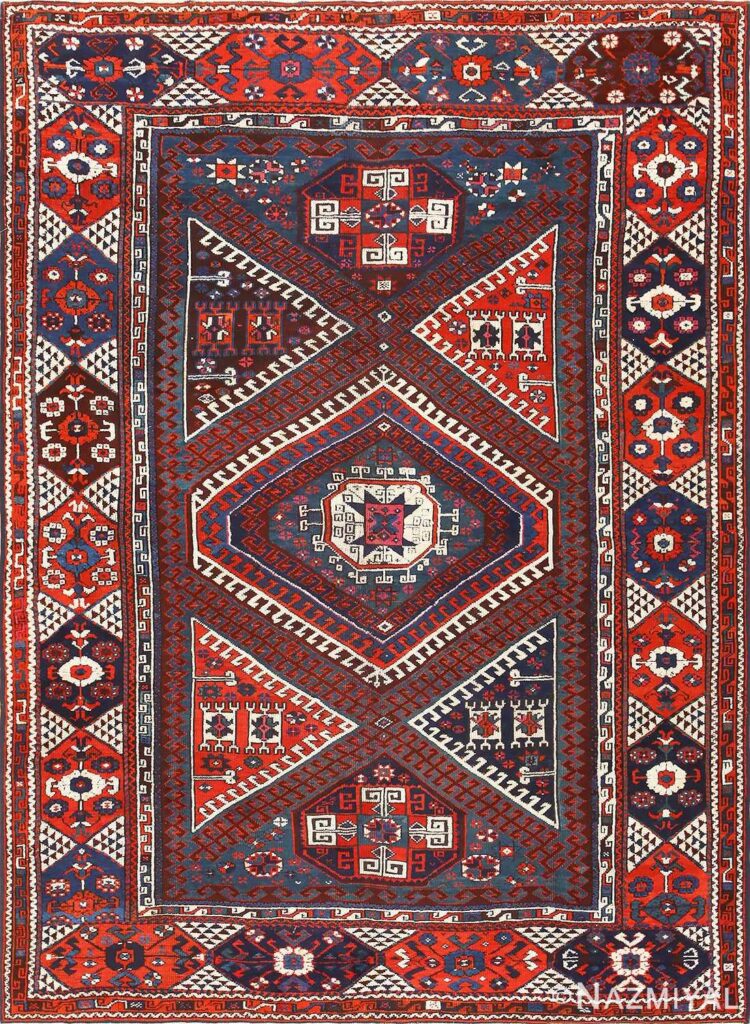Bergama Rugs
upon which Dionysus dances
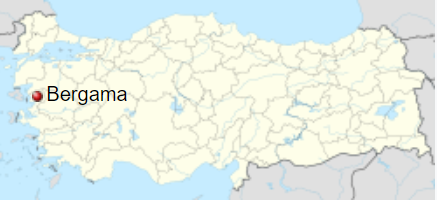
‘Bergama’ is the Turkish pronunciation for Ancient Greek ‘Pergamon’ and Latin ‘Pergamum’, home to Dionysus the god of the grape-harvest, winemaking and wine, of fertility, orchards and fruit, vegetation, insanity, ritual madness, religious ecstasy, festivity and theatre in the Greek tradition.
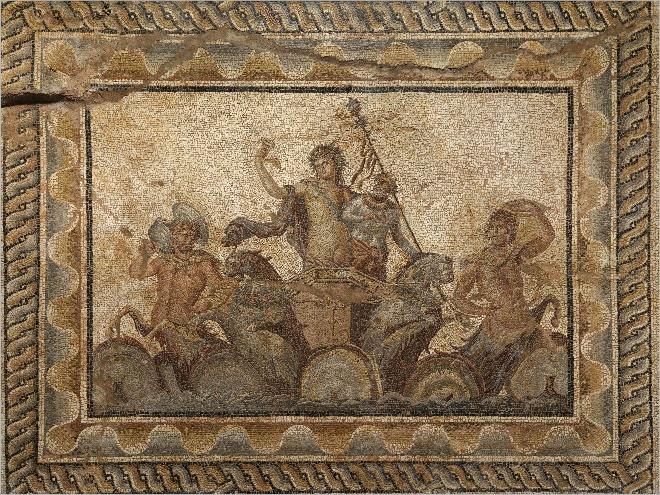
Such practices, indeed, need a rich inland at the Aegean region which Bergama is. At Pergamum, Dionysus had the epithet Kathegemon, ‘the guide’, and was already worshiped in the last third of the 3rd century BC, when the Attalids made him the chief god of their dynasty. In the 2nd century BC, Eumenes II built a marble temple for Dionysus at the northern end of the theatre terrace where the ruins still catch the tourist’s eyes.
Bergama has at least three major scattered sites of architectural and archeological interest — the Acropolis rising about 1,000 feet above the modern city; the Asclepion, an ancient form of spa and health center, and the Red Basilica. The Bergama Museum contains a small-scale model of the Altar of Zeus which is now in Berlin’s Pergamon museum.
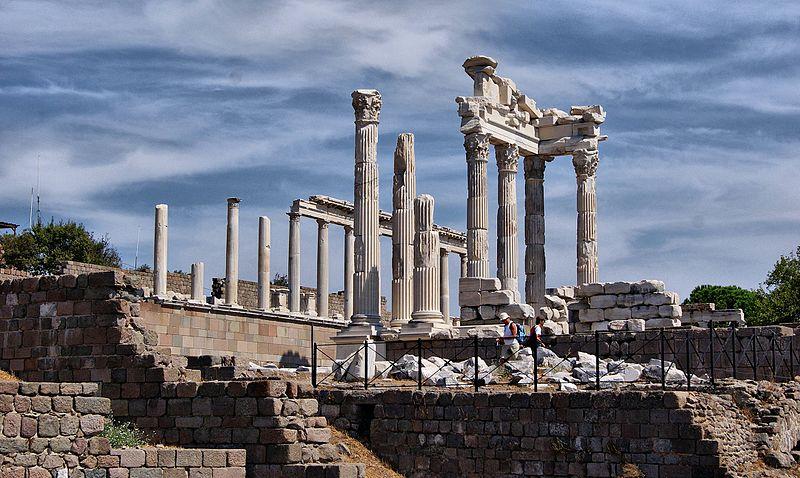
In the same museum are kept some of the oldest Bergama carpets still exist, made most probably at the early 15th century. Bergama region has a long tradition, considered one of the oldest rug center in western Anatolia. Lots of surviving Ottoman rugs woven prior to 1800 were products of workshops in Bergama. The term ‘Bergama’ is sometimes applied to western Anatolian rugs of indefinite origin.
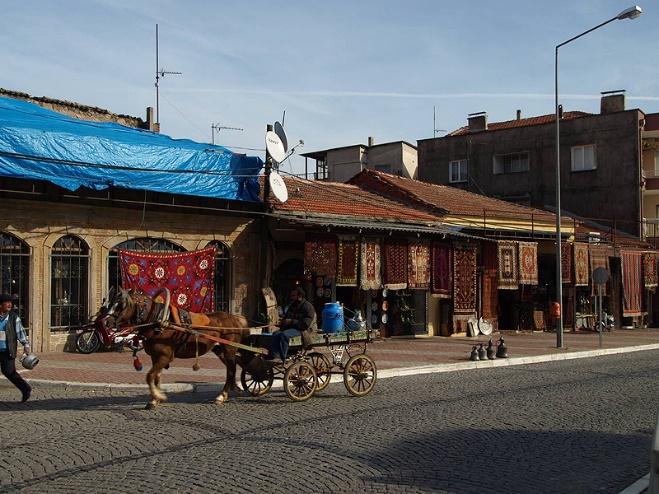
The Bergama district includes the regions of Kozak, Yuntağ, Yağcibedir, and Akhizar in all of which rugs are woven. A wide variety of designs are identified as Bergama. Yağcibedirs weave Nomadic pieces. A branch of the DOBAG project was set up in the Yuntdağ region. It is a Turkish national organization who succeeded to regain the once lost Anatolian carpet weaving fame and quality.
Technical aspects and the structure of Bergama Rugs
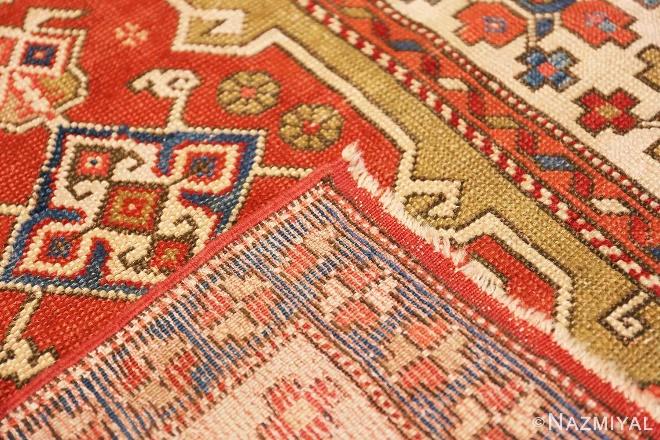
Bergama rugs are woven with symmetric (Turkish) knots. Such knots are also called Gördes in Anatolia which is a western Anatolian weaving center like Bergama.
Pile and foundation are chiefly woolen in pieces woven in Bergama. The knot density is about 12 knots per cm. Big rug sizes are common. 3×4 is a favored size in Bergama. Smaller area rugs are also found.


Dyeing and painting of Bergama rugs
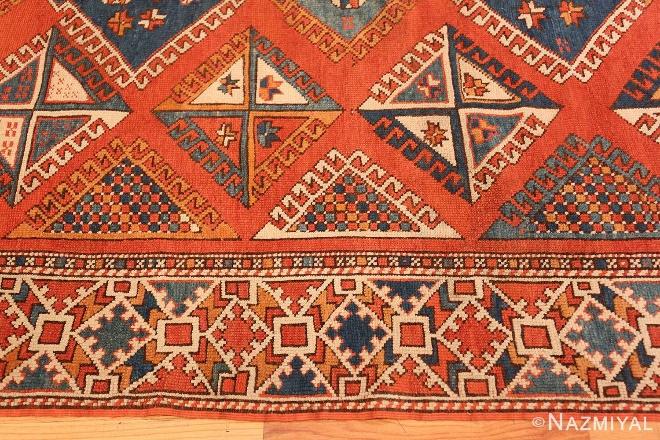
Red and dark blue are dominant on Bergama palette. The blue tend to azure. There are pieces painted beautifully with just red, blue and white (or beige). Apricot and light greens are dominant in some antique pieces.

Secondary palette may include light blues, light green, milky, beige, light rosy, oranges, yellows and pinks.
Designs and patterns of the Bergama rugs
A wide variety of designs are identified as Bergama as lots of Anatolian museum pieces are assumed to be woven in Bergama Imperial workshops. Named after Europian painters who depict these pieces, Bergama Antique designs include Ghirlandaio medallions and Holbein Type III which a large pattern version of Holbein design.
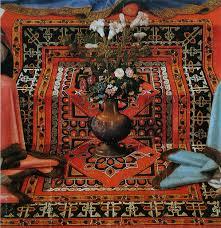
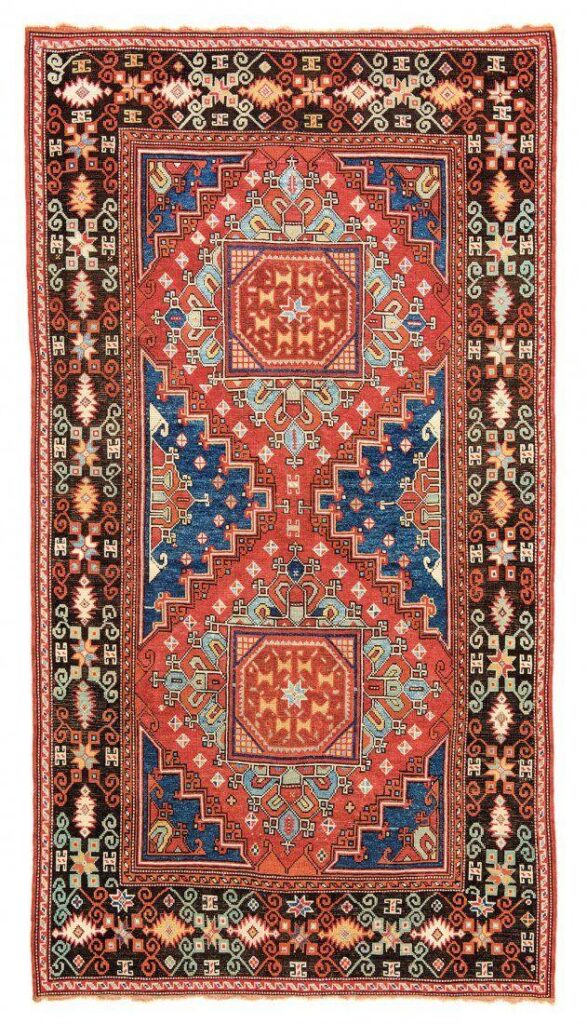
Antique pieces with Quincunx designs are also believed to be woven in Bergama. This is a common arrangement of medallions in rugs, one medallion in the center and a medallion in each of the four corners. Corner medallions are often smaller than the central ones.
Another Antique Bergama type called Kiz Bergama. Kiz is Turkish for girl or maiden and the pieces with such designs are considered bridal rugs.
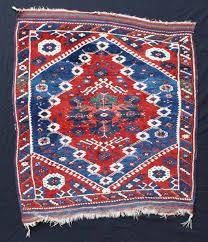
Contemporary Bergama rugs have Caucasian designs. All-over designs with geometric floral patterns are also common in the area.
